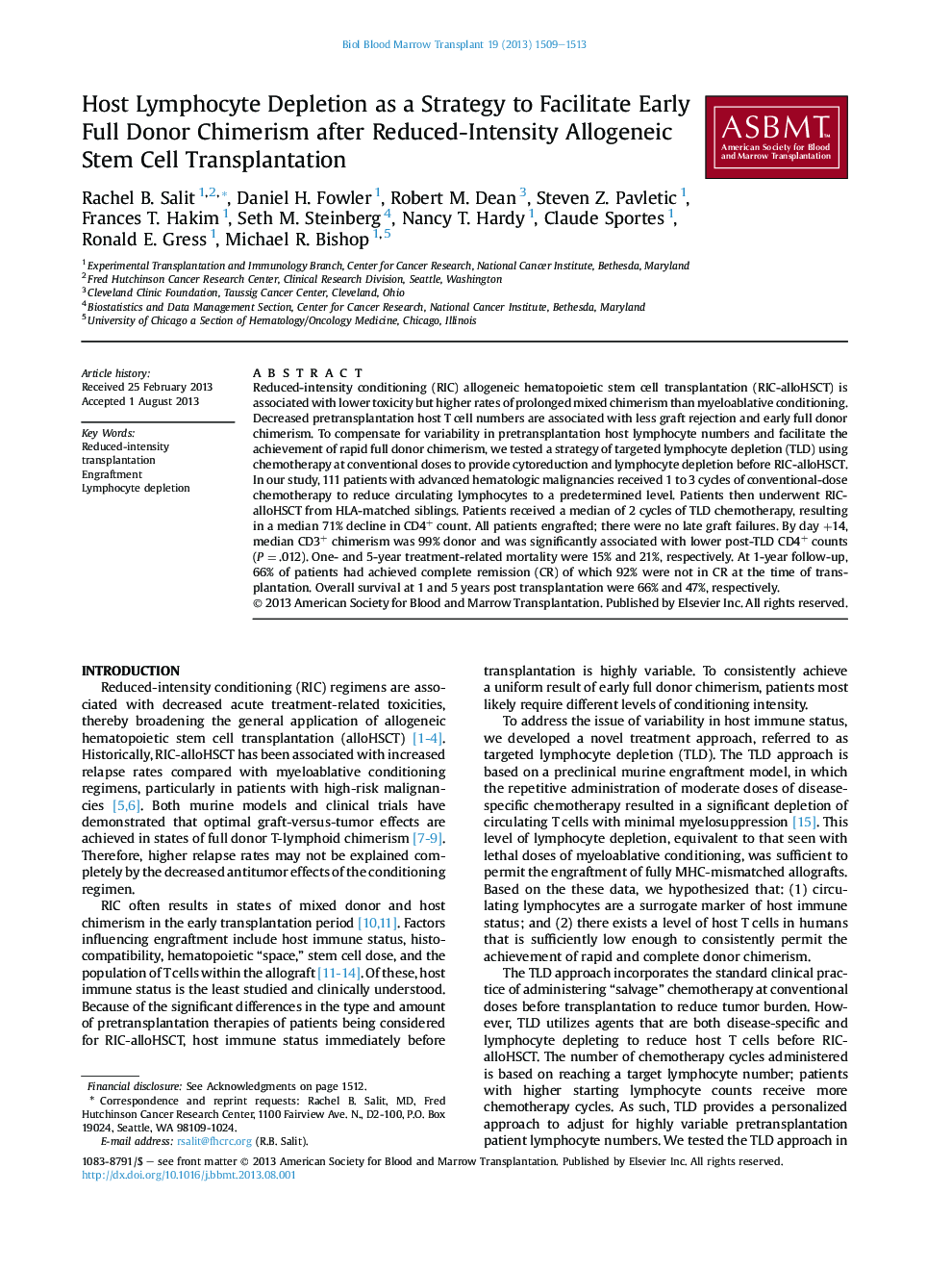| Article ID | Journal | Published Year | Pages | File Type |
|---|---|---|---|---|
| 2102431 | Biology of Blood and Marrow Transplantation | 2013 | 5 Pages |
Reduced-intensity conditioning (RIC) allogeneic hematopoietic stem cell transplantation (RIC-alloHSCT) is associated with lower toxicity but higher rates of prolonged mixed chimerism than myeloablative conditioning. Decreased pretransplantation host T cell numbers are associated with less graft rejection and early full donor chimerism. To compensate for variability in pretransplantation host lymphocyte numbers and facilitate the achievement of rapid full donor chimerism, we tested a strategy of targeted lymphocyte depletion (TLD) using chemotherapy at conventional doses to provide cytoreduction and lymphocyte depletion before RIC-alloHSCT. In our study, 111 patients with advanced hematologic malignancies received 1 to 3 cycles of conventional-dose chemotherapy to reduce circulating lymphocytes to a predetermined level. Patients then underwent RIC-alloHSCT from HLA-matched siblings. Patients received a median of 2 cycles of TLD chemotherapy, resulting in a median 71% decline in CD4+ count. All patients engrafted; there were no late graft failures. By day +14, median CD3+ chimerism was 99% donor and was significantly associated with lower post-TLD CD4+ counts (P = .012). One- and 5-year treatment-related mortality were 15% and 21%, respectively. At 1-year follow-up, 66% of patients had achieved complete remission (CR) of which 92% were not in CR at the time of transplantation. Overall survival at 1 and 5 years post transplantation were 66% and 47%, respectively.
